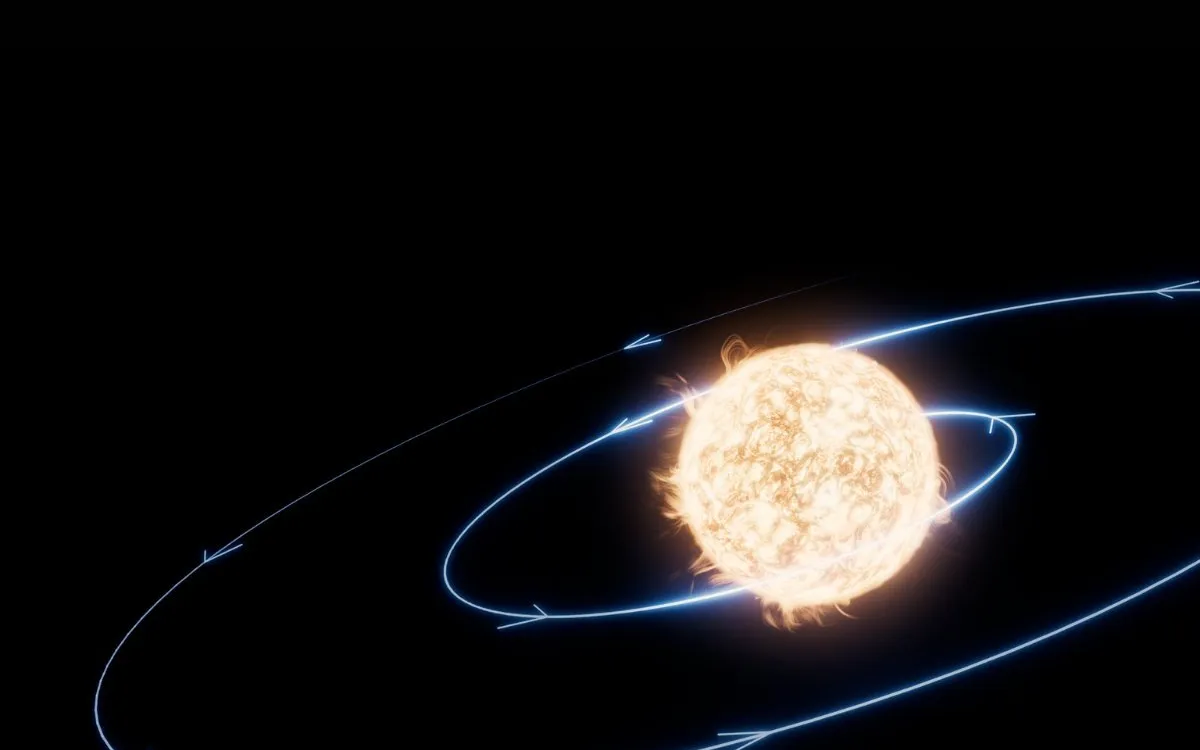
Astronomers utilizing NASA’s James Webb Space Telescope have recently uncovered a captivating twist in a cosmic mystery. The phenomenon under investigation involved a sudden brightening from a star located approximately 12,000 light-years away. Initially, this brightening was attributed to the star expanding into a red giant and potentially engulfing a nearby planet—a common narrative in many star systems. However, new findings reveal a different story.
Thanks to Webb’s advanced infrared technology, particularly its Mid-Infrared Instrument (MIRI) and Near-Infrared Spectrograph (NIRSpec), astronomers were able to delve deep into the dusty aftermath of the event. Contrary to initial assumptions, the star, designated ZTF SLRN-2020, exhibited a calm demeanor rather than expanding like a balloon. This crucial observation suggests that the nearby planet did not meet its demise through explosive stellar activity, but rather through a gradual orbital decline.
The new research, published in The Astrophysical Journal, indicates that the unfortunate planet, roughly the size of Jupiter, was orbiting perilously close to its host star—significantly closer than Mercury orbits our Sun. Over millions of years, this orbit steadily shrank, ultimately leading the planet to skim the star’s atmosphere. As described by study co-author Morgan MacLeod, an astrophysicist at the Harvard-Smithsonian Center for Astrophysics and MIT, the planet's material began to “smear around the star.” This intriguing process culminated in a fiery collision with the star.
“Because this is such a novel event, we didn’t quite know what to expect when we decided to point this telescope in its direction,” stated Ryan Lau, the lead author of the study and an astronomer at the National Science Foundation’s NOIRLab. The high-resolution infrared observations from Webb are providing invaluable insights into the final fates of planetary systems, including the potential fate of our own solar system.
The dramatic brightening observed when the planet’s material interacted with ZTF SLRN-2020 likely drew the attention of astronomers. This discovery is redefining our understanding of the first star observed actively consuming a planet. This remarkable observation was part of Webb’s Target of Opportunity programs—designed for unexpected cosmic occurrences, such as supernovas and now, planetary doom spirals.
With the advent of next-generation telescopes like the Vera Rubin Observatory and Nancy Grace Roman Space Telescope, astronomers anticipate uncovering many more intriguing stories of planetary mortality. As technology advances, our comprehension of cosmic phenomena will continue to expand, unveiling the mysteries of the universe.